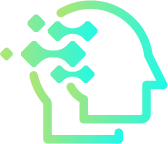How Teachers Are Using AI to Save Time in the Classroom
In 2025, artificial intelligence is no longer a futuristic concept—it’s a daily reality in classrooms around the world. Teachers are using AI tools to streamline grading, create lesson plans, personalize learning, and reduce administrative tasks. Instead of spending hours on paperwork, educators can now focus on what matters most: helping students learn. In this article, we’ll explore how AI is helping teachers save time and improve the overall teaching experience.
Did you know? A recent study shows that AI can reduce teachers’ administrative workload by up to 30%, freeing valuable time for one-on-one interaction with students.
Why AI Is Changing the Classroom
Teaching has always been rewarding—but time-consuming. Lesson planning, grading, and managing communications take hours every week. AI technologies simplify these repetitive tasks so teachers can concentrate on creative and interactive teaching.
Key Benefits for Educators
- Faster grading and feedback using AI-driven tools.
- Smarter lesson planning based on curriculum goals.
- Personalized learning paths for every student.
- Better classroom management through predictive analytics.
AI doesn’t replace teachers—it enhances their abilities by automating the repetitive tasks that slow them down.
1) Automating Grading and Assessments
One of the biggest time-savers for teachers is AI-powered grading tools. Platforms like Gradescope, Quizizz, and Google Forms use machine learning to analyze student answers, detect patterns, and provide instant feedback.
How It Works
- AI scans handwritten or typed responses and matches them with key concepts.
- Automatic scoring and rubric alignment save hours of manual checking.
- Students receive faster, data-driven feedback for improvement.
Teachers report saving several hours per week when using automated grading systems, especially for large classes.
2) Simplifying Lesson Planning
Creating engaging and standards-aligned lesson plans can take a lot of time. AI lesson planners like ChatGPT, LessonPlan.ai, and MagicSchool help teachers generate creative activities and resources in minutes.
Practical Uses
- Generate lesson outlines, quizzes, and worksheets automatically.
- Adapt content to different grade levels or learning styles.
- Save and reuse AI-generated materials for future classes.
With these tools, educators can focus more on teaching and less on preparation—helping them plan smarter, not harder.
3) Personalizing Learning for Every Student
AI helps teachers create customized learning experiences based on each student’s strengths and weaknesses. Adaptive platforms like Khanmigo, Smart Sparrow, and DreamBox adjust content difficulty and pacing automatically.
Key Advantages
- Students receive lessons that match their current skill level.
- AI tracks progress and suggests targeted exercises.
- Teachers get detailed insights into class performance.
This personalized approach ensures that no student is left behind and that advanced learners stay challenged.
4) Enhancing Communication and Parent Engagement
Managing messages, parent updates, and student reminders can consume hours. Tools like ClassDojo, Remind, and ChatGPT integrations can automate communication with parents and students.
How Teachers Use AI Messaging
- Send automatic homework updates and progress reports.
- Translate messages into multiple languages instantly.
- Respond to frequent parent questions using AI chat assistants.
This saves teachers countless emails while ensuring transparent, real-time communication between school and home.
5) Supporting Students with Special Needs
AI has made education more inclusive. Tools like Microsoft’s Immersive Reader and Speechify provide text-to-speech, visual aids, and personalized accessibility options for students with learning differences.
AI for Inclusion
- Helps students with dyslexia or ADHD stay focused.
- Converts text into audio or simpler language for comprehension.
- Adjusts learning materials for different reading levels.
Teachers benefit from these features because they can support diverse learners without extra workload.
6) Automating Administrative Tasks
Beyond teaching, educators handle scheduling, attendance, and reports. AI-powered systems like Schoolytics and PowerSchool automatically track attendance, manage grading records, and compile reports.
Administrative Time Savings
- Instantly generate performance reports for administrators.
- Automate daily attendance and late notifications.
- Predict at-risk students through AI analytics.
These automations allow teachers to spend more time mentoring students instead of dealing with paperwork.
7) Using ChatGPT as a Teaching Assistant
Many educators now use ChatGPT as a virtual assistant to draft assignments, design rubrics, and even brainstorm classroom discussions. It’s like having a digital co-teacher ready 24/7.
Practical Prompts
- “Create a 30-minute lesson plan on renewable energy for 8th grade.”
- “Generate 5 discussion questions about Shakespeare’s Hamlet.”
- “Write feedback for a student essay in a supportive tone.”
These uses help teachers save hours of planning time while maintaining creativity in lesson design.
8) AI Tools That Teachers Are Loving in 2025
Top Tools Making a Difference
- MagicSchool.ai – Creates rubrics, quizzes, and parent letters automatically.
- Curipod – Turns any topic into an interactive presentation.
- Eduaide.ai – Generates lesson ideas and standards-aligned resources.
- Canva for Education – Uses AI to design classroom visuals instantly.
- Khanmigo – Provides personalized tutoring for students and teaching support for educators.
These tools have become essential companions for modern teachers, reducing burnout and improving classroom engagement.
Tips for Using AI Responsibly in Education
1. Keep Human Oversight
AI can assist but should never make final grading or disciplinary decisions. Teachers should review and approve all AI-generated outputs.
2. Protect Student Data
Always use tools that comply with FERPA and GDPR regulations to ensure student privacy and data protection.
3. Maintain Fairness and Ethics
Check AI-generated results for bias or inaccuracies. Use AI as a guide, not a judge.
4. Train Teachers on AI Literacy
Schools should offer workshops so educators understand how to use AI effectively and ethically in the classroom.
